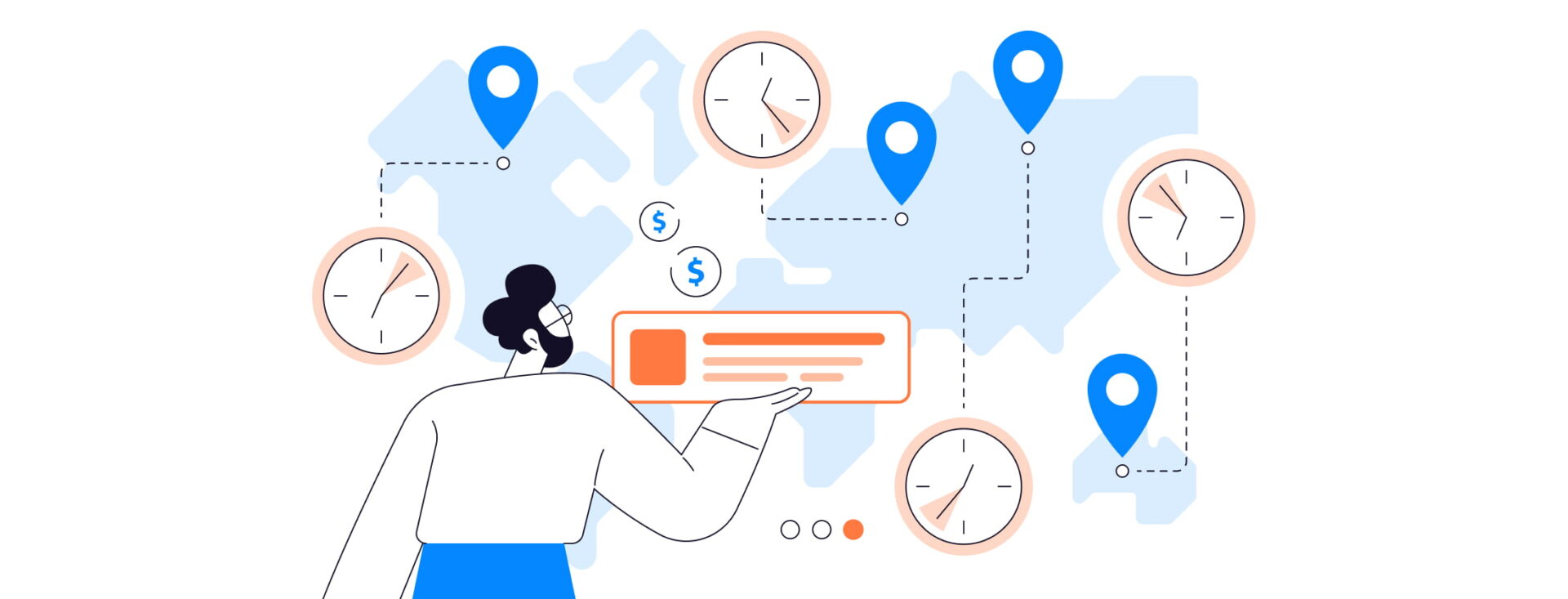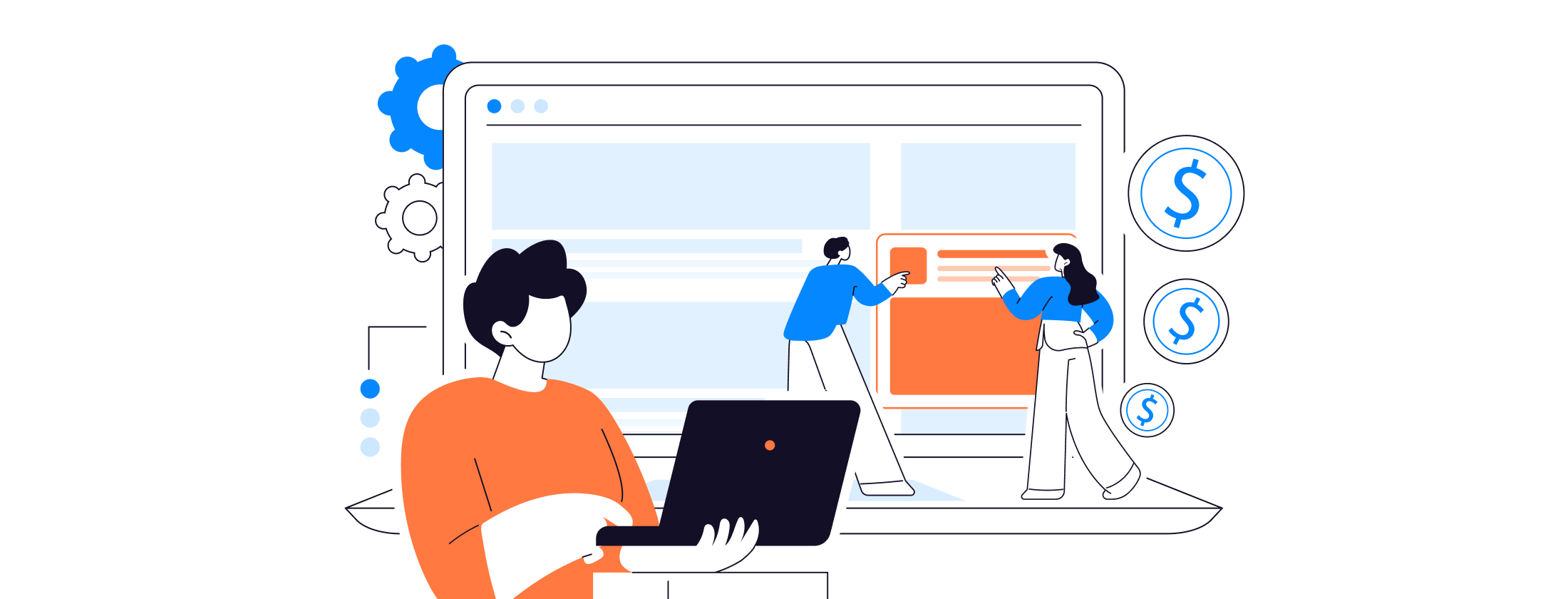Blog

In the realm of push notification marketing, timing is often hailed as the secret ingredient for success. However, while many marketers meticulously analyze the geographical locations for their ad campaigns, the importance of timing can sometimes be overlooked. This article aims to challenge conventional thinking and delve into the intricacies of timing in push notifications beyond geographical considerations.
In a world where consumers are constantly bombarded with advertisements, standing out requires more than just targeting the right audience. It demands delivering the right message at the right time and in the right context. While geo-targeting ensures relevance based on location, timing adds another layer of precision, ensuring that messages reach users when they are most receptive.
Let’s enumerate the main advantages of a successful time to send push notifications:
To harness the full potential of timing in push notifications, marketers need to adopt a more nuanced approach. This involves analyzing user behavior, understanding niche-specific timing and conducting A/B testing.
Dive deep into user behavior patterns to identify peak times of activity and engagement. Consider factors such as daily routines, work schedules, and leisure habits to pinpoint optimal timing windows
Here are some insights:

Different niches have distinct audience behaviors and preferences, necessitating tailored timing strategies. Here’s how to establish timing for various niches:
Peak engagement: 18 p.m. – 12 p.m.
The best time to send push notifications typically occurs during the evening hours, aligning with users’ leisure time and relaxation preferences. Testing is essential to identify the best timing for each market, considering factors like local gambling habits and regulations. Adjust timing strategies accordingly to maximize engagement and compliance with local laws.
Peak engagement: 7 a.m. – 9 a.m, 12 a.m. – 14 p.m.
Morning engagement and afternoon engagement coincide with users’ health and wellness routines, making these times ideal for reaching audiences interested in nutrition and supplements. Moreover, mornings are often a time when individuals are more alert and receptive to information, making it an opportune time to present them with relevant offers or updates.
Experimentation with timing variations allows marketers to align push notifications with users’ daily schedules and maximize receptivity.
Peak engagement: 18:00 – 23:00
The evening peak is prime time for dating-related push notifications, as users are often seeking social interaction and leisure activities after work. Cultural norms and leisure activities prevalent in each country should be considered when timing campaigns to ensure relevance and effectiveness.
Peak engagement: 9:00 – 11:00, 16:00 – 19:00
Weekday mornings and weekday evenings are optimal for e-commerce push notifications, as users are more likely to engage with shopping-related content during these times. Tailoring timing based on local shopping trends and peak purchasing hours maximizes the impact of push notification campaigns.
Peak engagement: 19:00 – 22:00.
Sweepstakes often appeal to users looking for excitement and the chance to win prizes, making evenings an opportune time for engagement. Many users participate in sweepstakes after completing their daily activities and have leisure time to explore opportunities to win. Conduct tests to identify optimal timing within this window, taking into account variations in user behavior and preferences across different markets.
Peak engagement: 11 a.m. – 15 a.m., 20 p.m. – 22 p.m.
For software and utility-related push notifications, peak engagement is observed during mid-morning hours and in the late evening. Users often seek productivity tools or solutions to technical issues during their work breaks or after completing their daily tasks. Testing various timing strategies can help identify the most effective windows for engagement.
Sending push notifications before 12 a.m. is a best practice because it’s when the majority of the audience is most active. This timing increases the likelihood of notifications being noticed and engaged with by users. Additionally, considering time zones ensures that notifications are received at an appropriate time regardless of the user’s location.
Conducting A/B testing
Conducting A/B testing in push notification marketing involves experimenting with different timing strategies to assess their impact on engagement and conversion rates. Marketers divide their audience into distinct groups and assign each group a different timing strategy for receiving push notifications.
By analyzing metrics such as open rates, click-through rates, and conversion rates, marketers can identify which timing strategy resonates best with their audience. Continuously refining and iterating based on real-time data and insights allows marketers to optimize timing approaches and drive better results in their push notification campaigns.
In summary, precise timing in push notification marketing significantly boosts user engagement and conversion rates. Understanding user behavior and niche-specific timing, along with conducting A/B testing, allows for targeted and effective messaging. This data-driven approach ensures that notifications are delivered when users are most receptive, maximizing the benefits of push notification campaigns.
In the realm of push notification marketing, timing is often hailed as the secret ingredient for success. However, while many marketers meticulously analyze the geographical locations for their ad campaigns, the importance of timing can sometimes be overlooked. This article aims to challenge conventional thinking and delve into the intricacies of timing in push notifications beyond geographical considerations.
In a world where consumers are constantly bombarded with advertisements, standing out requires more than just targeting the right audience. It demands delivering the right message at the right time and in the right context. While geo-targeting ensures relevance based on location, timing adds another layer of precision, ensuring that messages reach users when they are most receptive.
Let’s enumerate the main advantages of a successful time to send push notifications:
To harness the full potential of timing in push notifications, marketers need to adopt a more nuanced approach. This involves analyzing user behavior, understanding niche-specific timing and conducting A/B testing.
Dive deep into user behavior patterns to identify peak times of activity and engagement. Consider factors such as daily routines, work schedules, and leisure habits to pinpoint optimal timing windows
Here are some insights:

Different niches have distinct audience behaviors and preferences, necessitating tailored timing strategies. Here’s how to establish timing for various niches:
Peak engagement: 18 p.m. – 12 p.m.
The best time to send push notifications typically occurs during the evening hours, aligning with users’ leisure time and relaxation preferences. Testing is essential to identify the best timing for each market, considering factors like local gambling habits and regulations. Adjust timing strategies accordingly to maximize engagement and compliance with local laws.
Peak engagement: 7 a.m. – 9 a.m, 12 a.m. – 14 p.m.
Morning engagement and afternoon engagement coincide with users’ health and wellness routines, making these times ideal for reaching audiences interested in nutrition and supplements. Moreover, mornings are often a time when individuals are more alert and receptive to information, making it an opportune time to present them with relevant offers or updates.
Experimentation with timing variations allows marketers to align push notifications with users’ daily schedules and maximize receptivity.
Peak engagement: 18:00 – 23:00
The evening peak is prime time for dating-related push notifications, as users are often seeking social interaction and leisure activities after work. Cultural norms and leisure activities prevalent in each country should be considered when timing campaigns to ensure relevance and effectiveness.
Peak engagement: 9:00 – 11:00, 16:00 – 19:00
Weekday mornings and weekday evenings are optimal for e-commerce push notifications, as users are more likely to engage with shopping-related content during these times. Tailoring timing based on local shopping trends and peak purchasing hours maximizes the impact of push notification campaigns.
Peak engagement: 19:00 – 22:00.
Sweepstakes often appeal to users looking for excitement and the chance to win prizes, making evenings an opportune time for engagement. Many users participate in sweepstakes after completing their daily activities and have leisure time to explore opportunities to win. Conduct tests to identify optimal timing within this window, taking into account variations in user behavior and preferences across different markets.
Peak engagement: 11 a.m. – 15 a.m., 20 p.m. – 22 p.m.
For software and utility-related push notifications, peak engagement is observed during mid-morning hours and in the late evening. Users often seek productivity tools or solutions to technical issues during their work breaks or after completing their daily tasks. Testing various timing strategies can help identify the most effective windows for engagement.
Sending push notifications before 12 a.m. is a best practice because it’s when the majority of the audience is most active. This timing increases the likelihood of notifications being noticed and engaged with by users. Additionally, considering time zones ensures that notifications are received at an appropriate time regardless of the user’s location.
Conducting A/B testing
Conducting A/B testing in push notification marketing involves experimenting with different timing strategies to assess their impact on engagement and conversion rates. Marketers divide their audience into distinct groups and assign each group a different timing strategy for receiving push notifications.
By analyzing metrics such as open rates, click-through rates, and conversion rates, marketers can identify which timing strategy resonates best with their audience. Continuously refining and iterating based on real-time data and insights allows marketers to optimize timing approaches and drive better results in their push notification campaigns.
In summary, precise timing in push notification marketing significantly boosts user engagement and conversion rates. Understanding user behavior and niche-specific timing, along with conducting A/B testing, allows for targeted and effective messaging. This data-driven approach ensures that notifications are delivered when users are most receptive, maximizing the benefits of push notification campaigns.

Blog

Blog